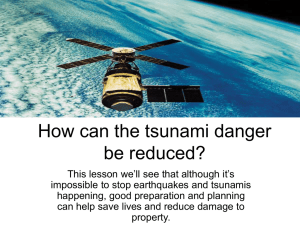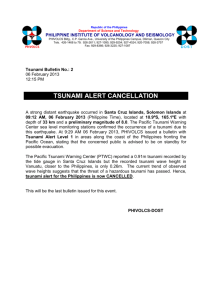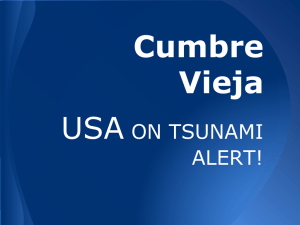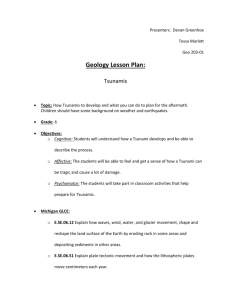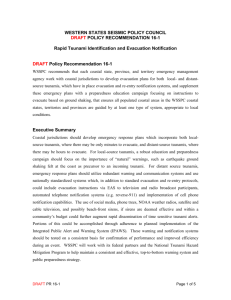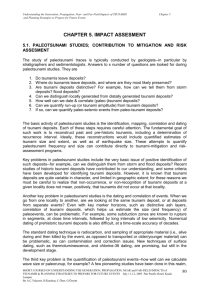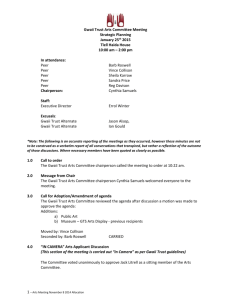Title graphing tsunamis application of data
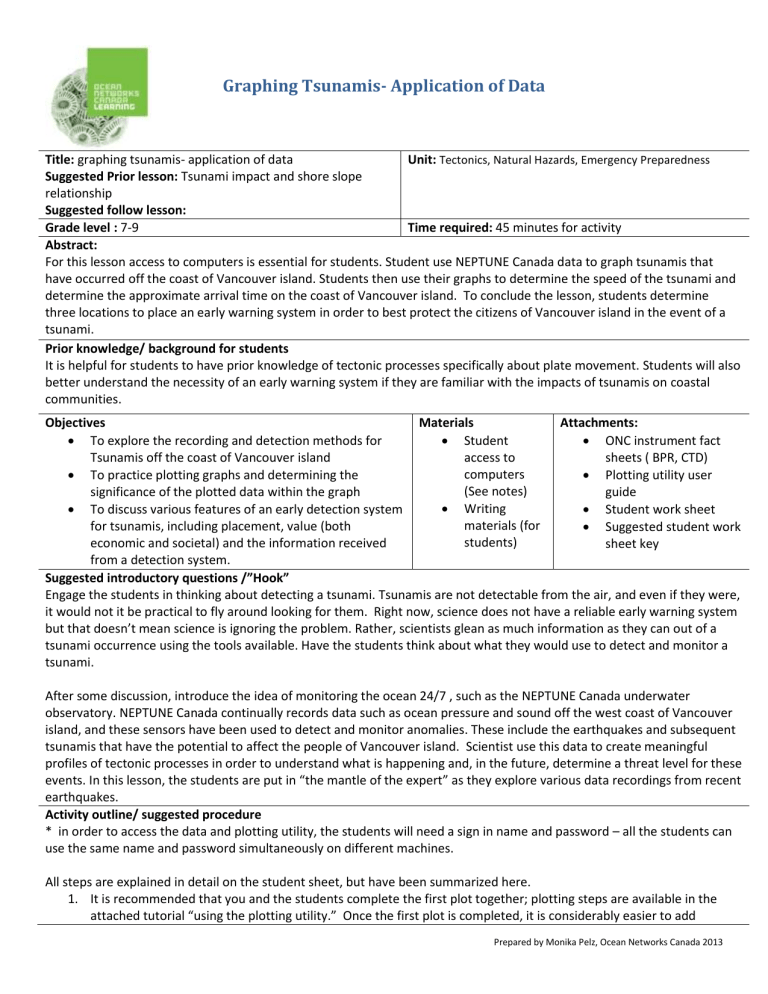
Graphing Tsunamis- Application of Data
Title: graphing tsunamis- application of data
Suggested Prior lesson: Tsunami impact and shore slope relationship
Suggested follow lesson:
Grade level : 7-9
Unit: Tectonics, Natural Hazards, Emergency Preparedness
Time required: 45 minutes for activity
Abstract:
For this lesson access to computers is essential for students. Student use NEPTUNE Canada data to graph tsunamis that have occurred off the coast of Vancouver island. Students then use their graphs to determine the speed of the tsunami and determine the approximate arrival time on the coast of Vancouver island. To conclude the lesson, students determine three locations to place an early warning system in order to best protect the citizens of Vancouver island in the event of a tsunami.
Prior knowledge/ background for students
It is helpful for students to have prior knowledge of tectonic processes specifically about plate movement. Students will also better understand the necessity of an early warning system if they are familiar with the impacts of tsunamis on coastal communities.
Objectives
To explore the recording and detection methods for
Tsunamis off the coast of Vancouver island
To practice plotting graphs and determining the significance of the plotted data within the graph
To discuss various features of an early detection system for tsunamis, including placement, value (both economic and societal) and the information received
Materials
Student access to computers
(See notes)
Writing materials (for students)
Attachments:
ONC instrument fact sheets ( BPR, CTD)
Plotting utility user guide
Student work sheet
Suggested student work sheet key from a detection system.
Suggested introductory questions /”Hook”
Engage the students in thinking about detecting a tsunami. Tsunamis are not detectable from the air, and even if they were, it would not it be practical to fly around looking for them. Right now, science does not have a reliable early warning system but that doesn’t mean science is ignoring the problem. Rather, scientists glean as much information as they can out of a tsunami occurrence using the tools available. Have the students think about what they would use to detect and monitor a tsunami.
After some discussion, introduce the idea of monitoring the ocean 24/7 , such as the NEPTUNE Canada underwater observatory. NEPTUNE Canada continually records data such as ocean pressure and sound off the west coast of Vancouver island, and these sensors have been used to detect and monitor anomalies. These include the earthquakes and subsequent tsunamis that have the potential to affect the people of Vancouver island. Scientist use this data to create meaningful profiles of tectonic processes in order to understand what is happening and, in the future, determine a threat level for these events. In this lesson, the students are put in “the mantle of the expert” as they explore various data recordings from recent earthquakes.
Activity outline/ suggested procedure
* in order to access the data and plotting utility, the students will need a sign in name and password – all the students can use the same name and password simultaneously on different machines.
All steps are explained in detail on the student sheet, but have been summarized here.
1.
It is recommended that you and the students complete the first plot together; plotting steps are available in the attached tutorial “using the plotting utility.” Once the first plot is completed, it is considerably easier to add
Prepared by Monika Pelz, Ocean Networks Canada 2013
Graphing Tsunamis- Application of Data
secondary and tertiary plots to the utility.
2.
Have the students plot the tsunami using the BPR sensor from ODP 1026 CORK, ODP 889 Bulleye, and Folger Deep.
3.
Using this data, answer the questions on the attached sheet.
4.
Using the same data, have the students determine the time between detection at each sensor.
5.
Have the students repeat steps 2-4 for the Haida Gwaii Earthquake from October 28 th , 2012.
6.
Allow time for students to finish questions.
Suggested summary questions
Direct your students to think about the previous lesson in which they explored the destructive power of tsunamis. After a few moments reflection, direct them to think about how the communities would have been able to prepare differently if there was an early warning system in place to detect the tsunami prior to arrival. Some suggested questions are:
How would a detection system differ for a community with a shallow flat beach from a community with a steep beach? Why?
How much notice is appropriate for a community? Related question: should all coastal communities be evacuated after an earthquake is detected? Only after geologists have determined that a tsunami might form? After anomalies are reported on the BPRS? For how long should the community be evacuated?
How do you create an early warning system that people trust? Related question: if it is used during a false alarm, how do you get people to heed the warnings the next time?
Assessment options
Instruct each student to save their plots with their name as the title. All plots will be saved under the sign-in name which can be accessed by the instructor under “Saved Plots”.
Student worksheets can be completed for mathematical and literacy assessment
Students can be challenged to record and plot other seismic events using various other utility available in the plotter.
Suggested additional reading, links, further information and connections.
Further reading on the Instruments available on the NEPTUNE site, (use the guide on the left to select the instrument) http://wiki.neptunecanada.ca/display/instruments
Further information on the Haida Gwaii earthquake http://www.neptunecanada.ca/news/newsdetails.dot?id=36730
Further reading on Haida Gwaii aftershock and negated tsunami http://www.neptunecanada.ca/news/newsdetails.dot?id=37009
Environment Canada, Canadian earthquake record http://www.earthquakescanada.nrcan.gc.ca/recent/2012/indexeng.php
Further reading on early warning systems: http://ptwc.weather.gov/
Notes:
NEPTUNE Canada data can be accessed and assessed using the plotting utility available on the website. Users need a
(free) sign-in name and password, but one name and password can be shared among the students simultaneously. After the activity is over, the password can be changed so that students may no longer access the sign-in name, allowing the graphs to be saved for assessment by the instructor.
Prepared by Monika Pelz, Ocean Networks Canada 2013

